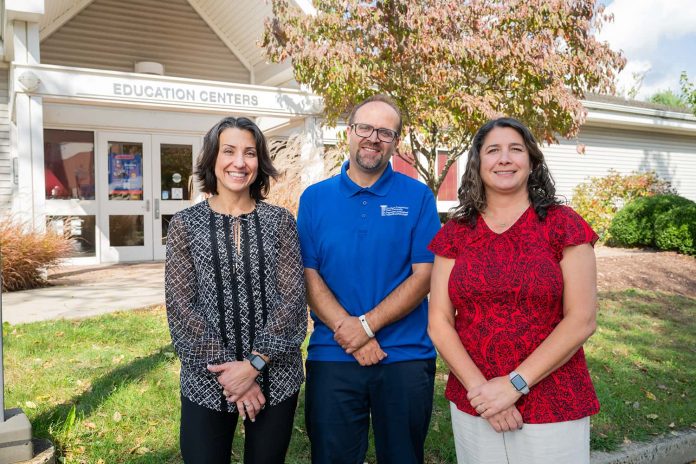Editor’s note: This is the second of a three-part series of articles about Southern’s exciting partnership program with the New Haven public school system to introduce high school students to college degree programs in industries that are in need of future employees. This article focuses on a teaching career pathway.
When it came down to identifying a second career pathway to offer to New Haven high school students, research led the way. A team of educators that included Dr. Nilvio Perez, director of undergraduate admissions; Dr. Trudy Milburn, associate vice president for academic affairs; and Dina Natalino, supervisor of College and Career Pathways for New Haven Public Schools, identified the need for a teaching pathway.
Insights identified a decline over the past decade in the number of degrees certified through the College of Education. The teacher shortage widened after a wave of early retirements during the Covid-19 pandemic, Perez said.
“Fifty years ago, students wanted to go into education because it was stable. It had a schedule. You knew when the breaks were. You were well respected in your community, your state, for being a teacher,” Perez said.
“Now, you’re working longer hours without more pay. The schedule is not consistent day to day, year to year. The pay’s not great. The stability you got with it is not the same today,” he said.
The group looked at students’ perceptions of teaching as a profession. The results surprised them. When a survey revealed very few were interested in a teaching career, the teaching career path was born.
“We need to get them excited about teaching and learning from different angles,” said Dr. Kari Sassu, director of the Center of Excellence for Teaching and Learning. Sassu and Dr. Olcay Yavuz, associate professor of educational leadership and policy studies, led last summer’s two-week pilot program of 24 students engaged in on-campus learning.
They studied the psychology of learning, mathematics in nature, and augmented reality, and embraced experiential learning aimed at helping them tap into specific interests.
“The hope was to spark an interest and a vision for how they could move into a field, and hopefully they come to Southern,” Sassu said.
Making college attainable for students in underserved populations is a key goal. For high school students in urban locations, a lack of qualified teachers can be an obstacle to a teaching pathway, Yavuz said.
“To solve the problem, we would like to prepare their students for the teaching pathway where we ‘grow our own teachers,’ so they can come back. They know the (school) system, they know New Haven,” Yavuz said.
The teaching pathway partnership is a first for Southern. High schoolers who enroll in the pathway earn college credits taking early college courses within the College of Education. “We will learn together, grow together,” Yavuz said.
For students exploring the teacher path, their introduction includes a special topics class to get them excited about education.
“Not as many students want to go into education. Only one student said, ‘I want to be a teacher.’ At the end, 19 of the 20 said, ‘I think I’d be interested’,” Yavuz said.
The education cohort has a goal of 15 students. Tenth graders can earn three Southern course credits and can continue earning credits in pathways until they graduate from high school. Coordinators hope to realize a 100 percent enrollment of participants moving on to pursue their college degrees.
A Streamlined Approach to a College Degree
The pathway program looked at giving early college experience to high school seniors, but that expanded to include juniors. Recognizing the power of success, coordinators extended the program to 10th graders, starting with one class. The course gives 10th graders a year to earn three credits.
“These students have an entire year to really make sure they’re going to find success in the class. They can withdraw with no penalty. We’re trying to do our best to promote confidence and success in the student. If we walk them through it well, they will finish 10th grade with three college credits and the feeling that, ‘Wow I did it, I earned three credits and I’m a sophomore,’” Perez said.
The teaching pilot program started last year with a cohort of twelve 10th graders. Half the cohort plans to continue, and those who complete the program by the time they graduate high school will have credits toward a teaching degree.
“It’s an intentional program to identify future teachers in the high school and hopefully have them earn their college degree and go back to teach in New Haven public schools,” Perez said.
For more information on the career pathways partnership program, contact Dr. Nilvio Perez at perezn18@southernct.edu.


